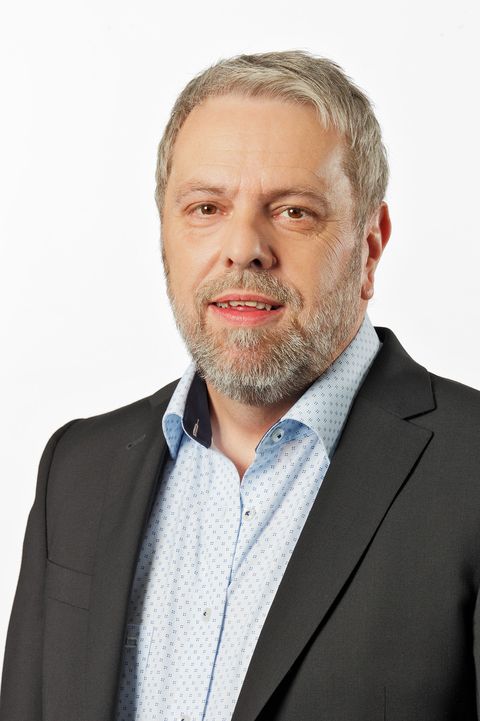Robots milk cows, drones map fields and sensors measure the nutrient level of the soil. This is what we call process optimization in the agricultural sector. In 2016, the Federal Ministry of Food and Agriculture set up a twelve-point digitalization plan. Dairy farmer Friedrich Bürkle and his family have built up a digital flagship farm in the Ursental in Baden-Württemberg over the past six years. He has invested not only two years of intensive planning, but also about one million euros in his automated farm. At first, the family had to face a lot of sceptics. “Many people thought I was crazy at the beginning,” he explains. But today most of the sceptic minds are convinced of the project. The farm was present in all types of media. There is a strong interest in the digitalized agriculture and a strong demand for automation technology in this sector. Farmer Bürkle has worked for the engineering company Arburg for 30 years. Therefore automation, the networking of machines and data processing were not new territory for him.
80 dairy cows are milked and fed with fully automatic robots on Friedrich Bürkle’s farm. The cows can choose freely when to walk to the milking station in certain intervals. The milking station always knows exactly, which cow is standing on the platform. Before the milking arm starts its work, the udder is cleaned with brushes, which looks a bit like a massage and visibly pleases the animals. By using a laser scanner, the milking robot is able to find the exact position of each cow’s udder. In the background there is also a lot going on: For example, the temperature and colour, and thus the quality of the milk, are analyzed. The farmer also relies on automation when it comes to the feeding of his animals. A feeding robot does its laps independently in the barn with fresh food up to eight times a day. The motto is: rather small and therefore always fresh portions. In case of technical problems, the machine calls on Friedrich Bürkle’s mobile phone, so he can check with his app, what kind of problem it is. Via Bluetooth, the feeding robot transmits information about the current weight and about the needed composition of food to the loading station, which loads the robot automatically. Another big advantage is that the composition of the food can be programmed differently for various “cow groups” depending on their needs. The feeding machine is also able to scan the food, that is left over, to fill it up needs-oriented. This is especially helpful during the summer, when cows need a little less food due to high temperatures. So thanks to modern technology, farmers cannot only save time, but also costs.
The calves also receive their milk automatically. Every three hours a feeding arm moves along the young animals and the farmer is able to control how much and how fast each calf drinks. Of course, there is a variety of other data that could be collected and saved in the future. Especially in the first 40 days, the development is significant and vital data could provide valuable information about the upcoming growth.
“The Transparent Cow”
With an app or on a screen Friedrich Bürkle can learn a lot about every single cow and its condition. All cows wear a choker with a chip, which records the activity and the movement of the cows, the amount of milk they give and the rumination behaviour. The farmer always knows exactly, which cow may have stomach problems, which cow is in heat or about to calve. He can track, if a cow did not visit the milking station and look after the animal. He has to go to the stable at least twice a day; the robots do not replace him. However, Friedrich Bürkle can now care about his animals more focused. When asked if the relationship with his cows has become impersonal somehow, he explains: “Every farmer has a very strong bond with his animals, giving them names and building up relationships with them. During the former daily milking, I mainly dealt with the udders; now I can take care of the whole cow.” He wants his cows to feel comfortable at any time. “In our cowshed there are no dead ends for the cows, so they can always avoid animals with higher ranking in the herd. Self-determined milking also makes the animals feel measurably better.” The animals are healthier in the fully automated cowshed and around ten percent more efficient in the milk production. Efficient management is required, when such high investments are made. Friedrich Bürkle knows what the production of a litre of milk costs at any time. The farmer’s profession is evolving more and more towards the tasks of a data manager.
BLDC Motors in the Digitalized Stable
The market, which was created by the new developments of “Agriculture 4.0”, is growing steadily. The motor development centre PM DM in Villingen-Schwenningen in southern Germany is developing brushless DC motors, which are, inter alia, used in the field of automated milking by moving and docking the milking arm to the udders. The control cylinder and other components are developed and built by the automation expert Festo in Esslingen. The MinebeaMitsumi subsidiary PM DM has been developing motors for this specific market for years. In this special application, the motors are exposed to enormous environmental requirements. With the “BLDC65” and a specific selection of materials, PM DM was able to fulfil all requirements and, above all, the challenging service life specification. The modified engine is in continuous use almost daily and therefore the power pack of the system. The production of brushless DC motors for the agricultural sector has risen significantly over the past few years.


